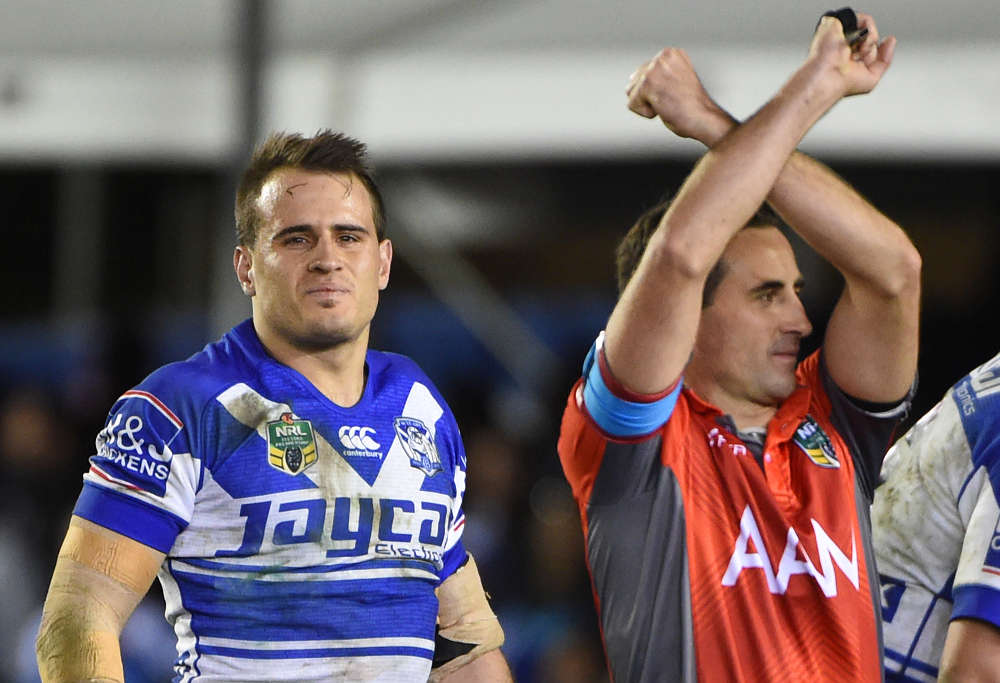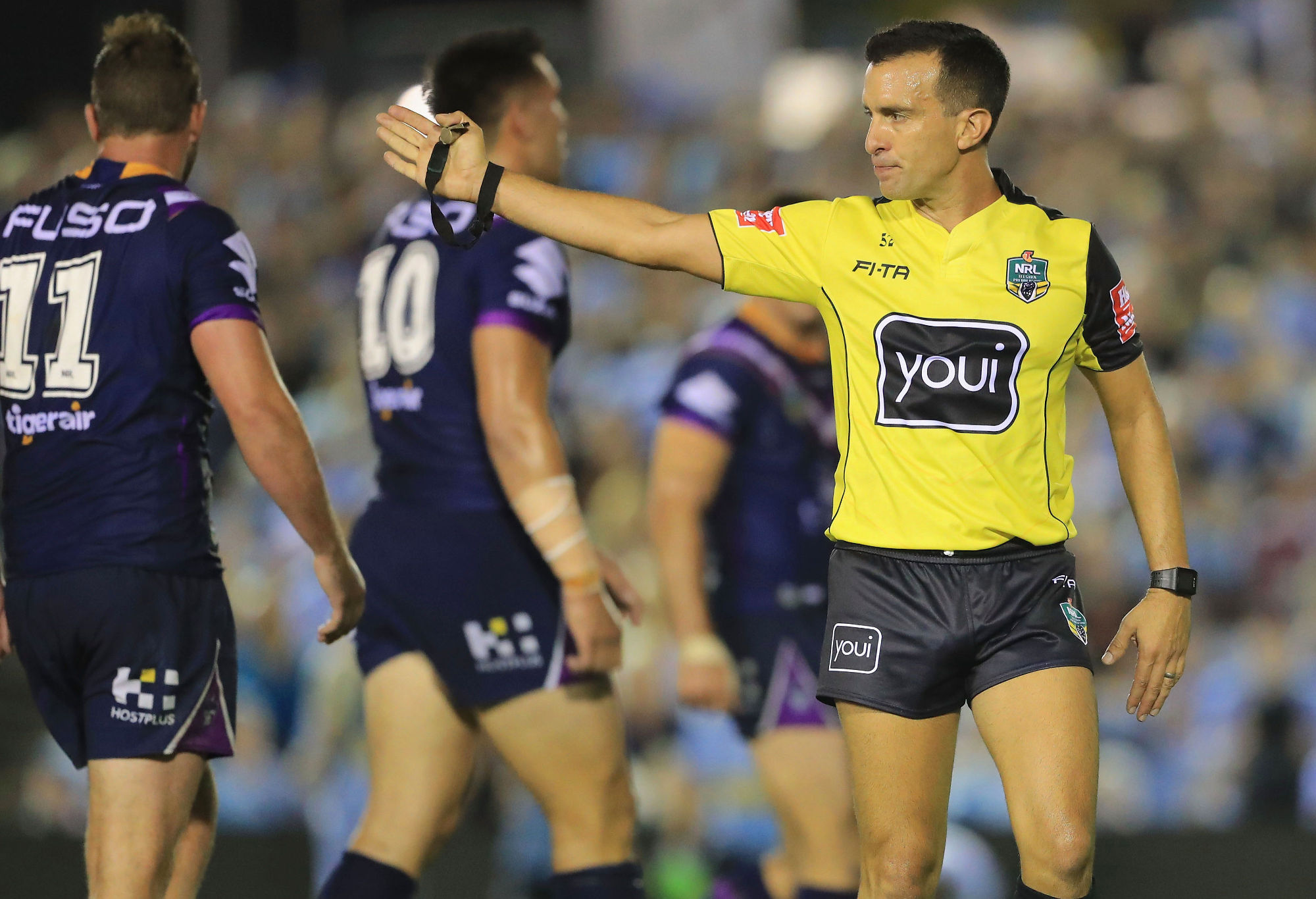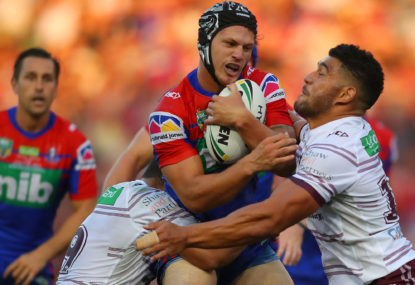While rugby league players aren’t generally known for their ability to perform linguistic acrobatics, it’s tough to get your head around words you can and can’t use on the footy field.
Say you call someone an ‘animal’, that’s generally seen as a positive – they’re wild, perhaps a little crazy-eyed and ready to rip in to the opposition. It’s everything you want in a teammate.
But calling someone a specific animal is likely to get you in trouble.
While in common parlance, ‘dog’ has become something of a friendly term – as the whitest man alive, I believe it is generally pronounced ‘dawg’ and stems from hip-hop culture – calling someone a dog on a footy field is about as bad as it gets, as it basically implies they commit cheap, dirty acts.
Similarly, day-to-day you can call someone ‘cat’ in a complimentary fashion – another music-based term, although this one has its roots far further back, to the days of jazz’s heady heights. But a ‘cat’ on a footy field is someone who lays down and fakes an injury to milk a penalty.
It’s almost the opposite of ‘dog’, yet somehow equally offensive.
Then there are grubs, a moniker that, if used at the pub, is not likely to make you any new friends. A ‘grub’ in rugby league is perhaps best described as a mixture of a cat and a dog – they commit cheap acts, and probably lay down to milk penalties.
Yet, for some reason, while opposition players calling you a ‘grub’ won’t stand, it can be a term of endearment from teammates and fans – ‘Grub’ is Josh Reynolds’ nickname, one which he wears with pride, and I daresay every Cronulla supporter would acknowledge Mick Ennis was a grub of the highest order, but he will always be a favourite in the Shire.

(AAP Image/Mick Tsikas)
So ‘animals’ are good, ‘dogs’ and ‘cats’ are bad, and ‘grubs’ are bad if they’re on an opposition team, but good if they’re on yours.
Confused? Yeah, me too. Have been for years.
The reason for raising this rugby league riddle is because the grubby act of performing a dog shot has been all the rage this past week or so.
It started last Sunday, in the Knights vs Cronulla game, when Luke Lewis came flying through on Kalyn Ponga and took the 20-year-old tyro out with a shoulder to the head after the Newcastle custodian had passed the ball.
The result? Ponga left the field for a mandatory HIA, while Lewis was allowed to play on without so much as a penalty called for the high, late contact. The veteran Shark was later charged by the judiciary and took an early guilty plea, meaning he won’t miss a single game.
Then, on Thursday night, Johnathan Thurston was left fuming after he was the victim of a late shot when Manly’s Jack Gosiewski came through and put a shoulder charge on the champion halfback long after he’d passed the ball.
Thurston was furious when quizzed about the incident after the match, saying, “What is it going to take? Me getting a broken rib and being out for three or four weeks before they really clamp down on it?”

JT (Photo by Ian Hitchcock/Getty Images)
In response, the judiciary charged Gosiewski with a grade 1 shoulder charge – an early guilty plea meaning he’ll miss one match, two if he fights the charge and loses.
Of course, considering the Sea Eagle suffered a broken arm during the match, which will rub him out for around a month, it’s a bit of a moot point either way.
So we’ve seen two instances in the space of five days where a big bloke comes through and puts a dog shot on a little bloke, and the result is that the victim is hurt – in one instance to the point where he’s forced to leave the field – while the guy who did the crime is allowed to keep playing, with the only repercussion being a 50-50 chance of missing one game.
The NRL is often accused of acting retroactively rather than proactively, but their crackdowns of late seem to be working.
Case in point, last week an announcement was made from NRLHQ declaring, “Referees have been instructed to penalise players for deliberately passing the ball into defending players at the ruck.”

(Photo by Mark Evans/Getty Images)
NRL head of Football Brian Canavan said, “What we have seen recently is a bad look for the game, and in simple terms, not in the spirit of the game.”
Basically, passing the ball into a defending player is a cat act of the highest order, yet one that had slunk into proceedings this year.
As a result, it was stamped out. Sure, it was dealt with 12 rounds too late, but better late than never.
Now, while – as I think I made clear above – I’m not sure whether it’s worse to be a cat or a dog in rugby league, I know which kind of act I’d rather see a player be the victim of.
I can deal with someone getting a football passed into them. I don’t like it, but not too many people ended up with long-term injuries by copping a Steeden to the ribs (in fact, it’s kind of how the game works).
But seeing a small bloke – and it’s invariably a small bloke who cops it – be the victim of a late, high shot from a big bloke? That, Mr Canavan, is a really bad look for the game.
And it’s time to stamp it out.
Because while neither are ideal, a cat act – like milking a penalty – is far better for player welfare than someone committing the grubby act of putting on a dog shot.
The time to do something about it is now – before the horse has bolted.
































































































